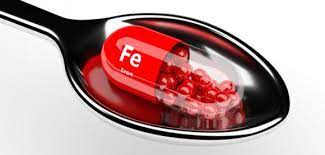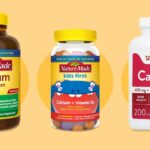How to Take Iron Pills Correctly

Iron is an important mineral that helps maintain healthy blood. A lack of iron is called iron-deficiency anemia, which affects about 4-5 million Americans yearly. It is the most common nutritional deficiency worldwide, causing extreme fatigue and lightheadedness. It affects all ages, with children, women who are pregnant or menstruating, and people receiving kidney dialysis among those at highest risk for this condition.
Iron is a major component of hemoglobin, a type of protein in red blood cells that carries oxygen from your lungs to all parts of the body. Without enough iron, there aren’t enough red blood cells to transport oxygen, which leads to fatigue. Iron is also part of myoglobin, a protein that carries and stores oxygen specifically in muscle tissues. Iron is important for healthy brain development and growth in children, and for the normal production and function of various cells and hormones.
Iron from food comes in two forms: heme and non-heme. Heme is found only in animal flesh like meat, poultry, and seafood. Non-heme iron is found in plant foods like whole grains, nuts, seeds, legumes, and leafy greens. Non-heme iron is also found in animal flesh (as animals consume plant foods with non-heme iron) and fortified foods.
Iron is stored in the body as ferritin (in the liver, spleen, muscle tissue, and bone marrow) and is delivered throughout the body by transferrin (a protein in blood that binds to iron). A doctor may sometimes check blood levels of these two components if anemia is suspected.
What about iron supplements?
Iron is available in supplement form. Some cereals and multivitamin/mineral supplements are fortified with 100% of the RDA for women for iron (18 mg). Over-the-counter high-dosage iron supplements prescribed for those with iron-deficiency anemia or who are at high risk for it may contain 65 mg or more. Commonly reported side effects of using high-dosage iron supplements include constipation and nausea.
Confusion with iron supplements
There are several types of iron available as over-the-counter supplements, e.g., ferrous sulfate, ferrous fumarate, ferrous gluconate. Confusion is also caused by two number amounts listed on the label, a higher number and a lower number. What is the difference among supplement forms and which number should you refer to for the right amount to take?
Elemental versus chemical form of iron. If two iron amounts are listed on the label, the larger number is the chemical compound form because iron is bound to salts (e.g., ferrous sulfate), whereas the smaller number refers only to the amount of iron in the compound, also called the elemental iron. Elemental iron is the more important number because this is the amount available for the body to absorb. However, a physician may not specify in a prescription if the iron amount is the chemical form or the elemental iron. For example, a ferrous sulfate iron supplement may list a total of 325 mg of ferrous sulfate on the front of the label but 65 mg of elemental iron in smaller print on the back. If a physician prescribed 65 mg of iron, would you take five pills to equal 325 mg, or just one pill, assuming the prescription referred to elemental iron?
Different types. All types of supplemental iron help to increase red blood cell production but vary in cost and amounts of elemental iron. Ferrous gluconate is usually sold in liquid form and some clinical studies have shown that it is better absorbed than ferrous sulfate tablets. However, ferrous gluconate contains less elemental iron than ferrous sulfate, so a greater dosage may be needed to correct a deficiency. It is also more expensive than ferrous sulfate. Newer slow-release forms of iron have been introduced, which may help reduce gastrointestinal side effects, but they are more expensive and usually contain less iron.
Recommended Amounts
RDA: The Recommended Dietary Allowance (RDA) for adults 19-50 years is 8 mg daily for men, 18 mg for women, 27 mg for pregnancy, and 9 mg for lactation. The higher amounts in women and pregnancy are due to blood loss through menstruation and because of the rapid growth of the fetus requiring extra blood circulation during pregnancy. Adolescents 14-18 years actively growing also need higher iron: 11 mg for boys, 15 mg for girls, 27 mg for pregnancy, and 10 mg for lactation. The RDA for women 51+ years drops to 8 mg with the assumption that cessation of menstruation has occurred with menopause. It may be noted that menopause occurs later for some women, so they should continue to follow the RDA for younger women until menopause is confirmed.
UL: The Tolerable Upper Intake Level is the maximum daily intake unlikely to cause harmful effects on health. The UL for iron is 45 mg daily for all males and females ages 14+ years. For younger ages, the UL is 40 mg.
How to take iron pills correctly
Iron supplements may be taken as capsules, tablets, chewable tablets, and liquids. The most common tablet size is 325 mg (ferrous sulfate). Other common chemical forms are ferrous gluconate and ferrous fumarate.
Have your health care provider tell you how many pills you should take each day and when you should take them. Taking more iron than your body needs can cause serious medical problems.
Blood counts return to normal after 2 months of iron therapy for most people. You may need to continue taking supplements for another 6 to 12 months to build up the body’s iron stores in the bone marrow.
Tips For Taking Iron
Iron is best absorbed on an empty stomach. Yet, iron supplements can cause stomach cramps, nausea, and diarrhea in some people. You may need to take iron with a small amount of food to avoid this problem.
Milk, calcium and antacids should NOT be taken at the same time as iron supplements. You should wait at least 2 hours after having these foods before taking your iron supplements.
Foods that you should NOT eat at the same time as you take your iron include:
- High fiber foods, such as whole grains, raw vegetables, and bran
- Foods or drinks with caffeine
Some doctors suggest taking a vitamin C supplement or drinking orange juice with your iron pill. This can help the iron absorb into your body. Drinking 8 ounces (240 milliliters) of fluid with an iron pill is also OK.
Tell your provider about all the medicines you are taking.
- Iron tablets may cause other drugs you are taking to not work as well. Some of these include tetracycline, penicillin, and ciprofloxacin and drugs used for hypothyroidism, Parkinson disease, and seizures.
- Medicines that reduce stomach acid will impair iron absorption. Your provider may suggest changing these.
- Wait at least 2 hours between doses of these drugs and iron supplements.
Side Effects
Constipation and diarrhea are very common. If constipation becomes a problem, take a stool softener such as docusate sodium (Colace).
Nausea and vomiting may occur with higher doses, but they can be controlled by taking the iron in smaller amounts. Ask your provider about switching to another form of iron rather than just stopping.
Black stools are normal when taking iron tablets. In fact, this is felt to be a sign that the tablets are working correctly. Talk to your provider right away if:
- The stools are tarry-looking as well as black
- If they have red streaks
- Cramps, sharp pains, or soreness in the stomach occur
Liquid forms of iron may stain your teeth.
- Try mixing the iron with water or other liquids (such as fruit juice or tomato juice) and drinking the medicine with a straw.
- Iron stains can be removed by brushing your teeth with baking soda or peroxide.
Keep tablets in a cool place. (Bathroom medicine cabinets may be too warm and humid, which may cause the pills to fall apart.)
Keep iron supplements out of the reach of children. If your child swallows an iron pill, contact a poison control center right away.





